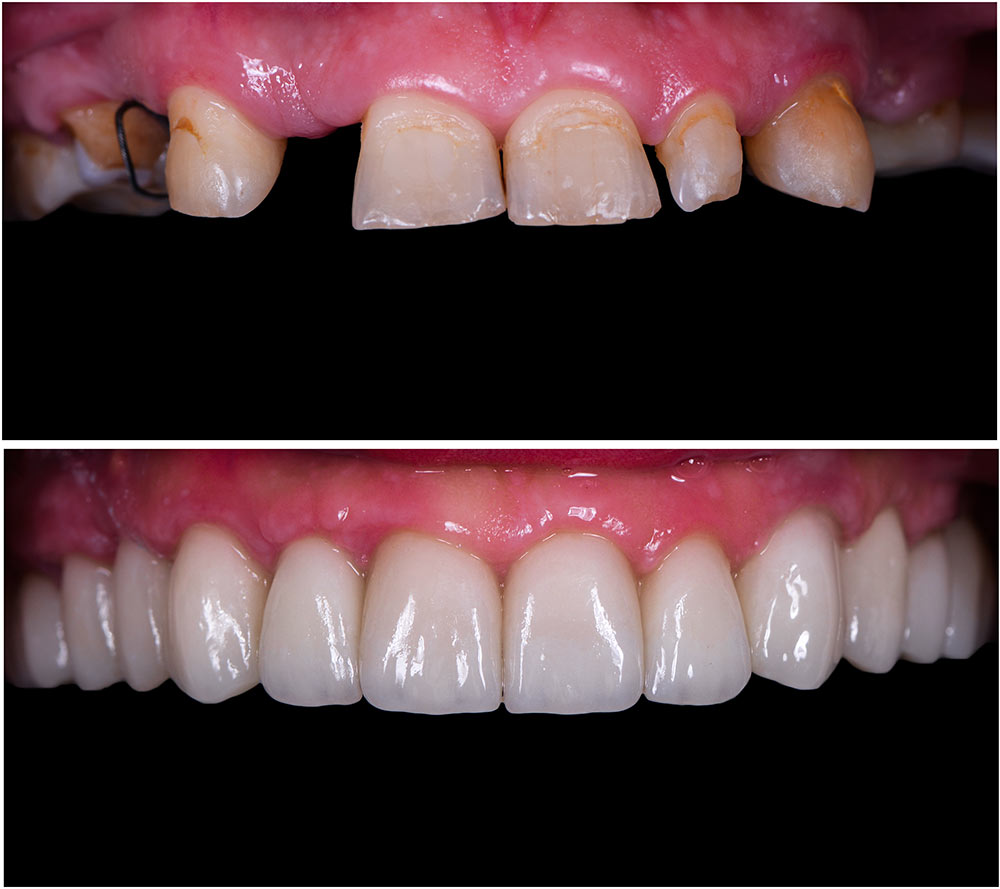Dental Crown / Bridge / Caps Treatment in Gurgaon
Our dentist may recommend a dental crown to -

A bridge may be recommended if you’re missing one or more teeth. Gaps left by missing teeth eventually cause the remaining teeth to rotate or shift into the empty spaces, resulting in a bad bite. The imbalance caused by missing teeth can also lead to gum disease and temporomandibular joint (TMJ) disorders.
Bridges are commonly used to replace one or more missing teeth. They span the space where the teeth are missing. Bridges are cemented to the natural teeth or implants surrounding the empty space. These teeth, called abutments, serve as anchors for the bridge. A replacement tooth, called a pontin, is attached to the crowns that cover the abutments. As with crowns, you have a choice of materials for bridges. Your dentist at MFD can help you decide which to use, based on the location of the missing tooth (or teeth), its function, aesthetic considerations and cost. Porcelain or ceramic bridges can be matched to the color of your natural teeth.
The combination of bacteria and food causes tooth decay. A clear, sticky substance called plaque that contains bacteria is always forming on your teeth and gums. As the bacteria feed on the sugars in the food you eat, they make acids. The acids attack the teeth for 20 minutes or more after eating. Over a period of time, these acids destroy tooth enamel, resulting in tooth decay. Tooth decay is heavily influenced by lifestyle what we eat, how well we take care of our teeth, the presence of fluoride in our water and toothpaste. Heredity also plays a role in how susceptible your teeth may be to decay. Adults are especially at risk for cavities if they suffer from dry mouth, a condition due to a lack of saliva. Dry mouth may be caused by illness, medications, radiation therapy and chemotherapy, and may be either temporary (days to months) or permanent, depending on its cause.
A crown is a type of dental restoration which completely caps or encircles a tooth or dental implant. Crowns bridge are often needed when a large cavity threatens the ongoing health of a tooth. They are typically bonded to the tooth using dental cement. Crowns can be made from many materials, which are usually fabricated using indirect methods. Crowns are often used to improve the strength or appearance of teeth.
The most common method of crowning a tooth involves using a dental impression of a prepared tooth by a dentist to fabricate the crown outside of the mouth. The crown can then be inserted at a subsequent dental appointment. Using this indirect method of tooth restoration allows use of strong restorative materials requiring time consuming fabrication methods requiring intense heat, such as casting metal or firing porcelain which would not be possible to complete inside the mouth. Because of the expansion properties, the relatively similar material costs, and the aesthetic benefits, many patients choose to have their crown fabricated with gold.
As new technology and materials science has evolved, computers are increasingly becoming a part of crowns bridge fabrication, such as in CAD/CAM Dentistry.

